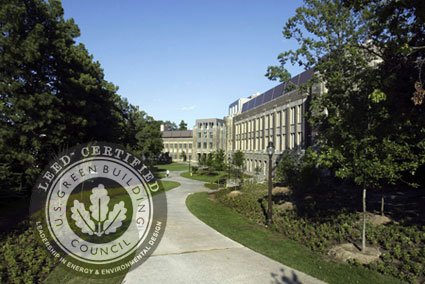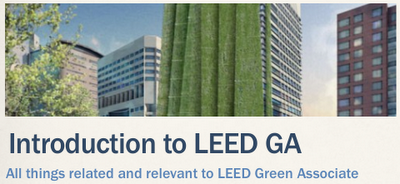Home Improvement
What is LEED Certification and How Does Someone Become a LEED Green Associate?

When a building has been LEED certified, it means that the designers and builders have created a structure that is environmentally responsible and resource-efficient. There is a high bar set for building projects to be able to become LEED certified, which means that everyone working on the project needs to be well versed in LEED certification building processes and techniques. In order to ensure that the members of a building project have the knowledge that will lead them to being able to construct a green building that is up to the tight standards of LEED certification, each member should attain a LEED Green Associate designation.
In order to attain a LEED Green Associate designation, both building professionals and non-technical professionals will gain an understanding of the LEED credit rating system, LEED standards and the LEED design system. And because there are no prerequisites for taking the course, it is an ideal continuing education opportunity for anyone in the building and construction space. Because the course can be taken either in person or online, it fits the schedules of the majority of professionals taking it.
CleanEdison is one company that offers both online and instructor-led classroom versions of the LEED Green Associate exam prep classes or LEED Training. These classes are designed to teach students about the sustainable green building industry and everything they need to know about the requirements and benefits of LEED certified buildings.
During the course, students will learn about:
• Introduce U.S Green Building Council (USGBC)
• Introduce Green Building Certification Institute (BGBCI)
• Describe Leadership in Energy and Environmental Design (LEED)
• Define scope of the various LEED rating systems
• Detail crucial green building concepts and implementation
• Enable success on LEED Green Associate exam on the first try
This course is designed to prepare students to earn their LEED Green Associated certification.
CleanEdison is committed to ensuring that its students pass their examinations on the first try. If unsuccessful, students have the option of retaking the course without charge in an effort to earn their certification.
The reason behind this highly sought after certification is that LEED certified buildings are designed to use resources more efficiently when compared to conventional buildings simply built to code. LEED certified buildings often provide healthier living environments. The USGBC has compiled a long list of benefits of implementing a LEED strategy, which ranges from improving air and water quality to reducing solid waste, benefiting owners, occupiers, and society as a whole.
When a LEED rating is desired, there is often an increase in the initial design and construction cost. Additional concerns surround the availability of LEED compliant resources and there is an additional cost involved with actually pursuing a LEED certification. So, with all of these additional costs, what is the return on investment? Generally speaking, the higher initial costs are offset by the cost savings over time in terms of building operation costs and energy efficiency savings.
One of the largest initial costs is the installation of photovoltaic cells designed to capture and store UV radiation and convert it into usable electricity. Solar Training is also available through CleanEdison.com.
CleanEdison is a leader in LEED Training and Solar Training for building professionals. For more information, visit www.cleanedison.com.
-

 Tech11 years ago
Tech11 years agoCreating An e-Commerce Website
-

 Tech11 years ago
Tech11 years agoDesign Template Guidelines For Mobile Apps
-

 Business6 years ago
Business6 years agoWhat Is AdsSupply? A Comprehensive Review
-

 Business10 years ago
Business10 years agoThe Key Types Of Brochure Printing Services
-

 Tech8 years ago
Tech8 years agoWhen To Send Your Bulk Messages?
-

 Tech5 years ago
Tech5 years ago5 Link Building Strategies You Can Apply For Local SEO
-

 Law5 years ago
Law5 years agoHow Can A Divorce Lawyer Help You Get Through Divorce?
-

 Home Improvement6 years ago
Home Improvement6 years agoHоw tо Kеер Antѕ Out оf Yоur Kitсhеn































